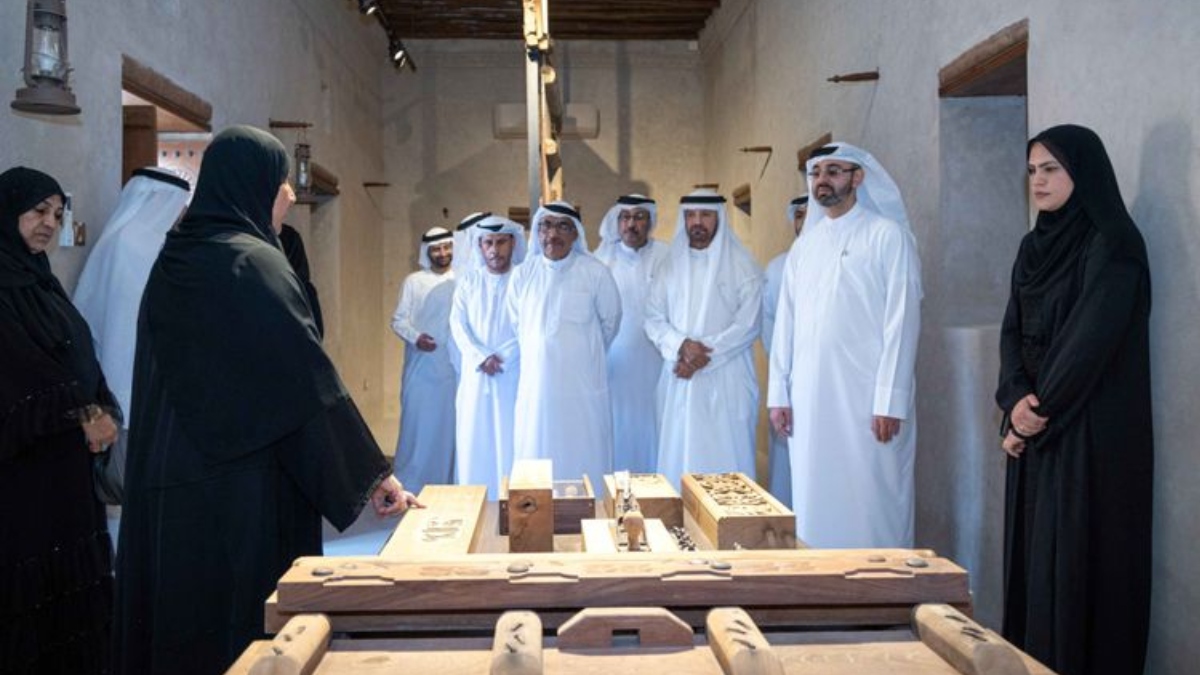A piece of Emirati history has been brought back to life as the iconic ‘Bait Sheikh Saeed bin Hamad Al Qasimi’ reopens its doors in the picturesque seaside town of Kalba, located in the eastern region of Sharjah emirate.
Dating back to 1899, this historical landmark once served as the residence and seat of governance for a late Sheikh. Now, it offers visitors a unique opportunity to step back in time and immerse themselves in the pre-oil era lifestyle and the rich history of the region through a captivating collection of preserved relics.
Perched on the shores of the Gulf of Oman, this house, which served as a secure haven for the Sheikh’s extended family and the seat of government, was constructed in harmony with local design elements and cultural traditions.
The museum’s grand reopening ceremony was attended by various dignitaries, including Khalid Al Midfa, chairman of Sharjah Commerce and Tourism Development Authority, and Sheikh Salem bin Mohammed bin Salem Al Qasimi, Director of Sharjah Tourism and Commerce Development Authority.
Aisha Rashid Deemas, Director-General of Sharjah Museums Authority, expressed her excitement about reviving the house as a cultural and heritage center, emphasizing the authority’s dedication to raising awareness of Sharjah’s rich historical and cultural heritage.
She added that the reopening aims to encourage cultural engagement and expand public understanding of the region’s historical journey. Aisha stated, “We hope that the venue will attract tourists and the general public alike, igniting their curiosity to explore the abundant cultural and historical treasures of Kalba city and the Emirate of Sharjah. With its diverse exhibits, the house offers visitors precious glimpses into the lifestyle and customs of a bygone era, preserving and honoring our collective heritage for future generations.”
What to expect inside
The house is divided into distinct sections, with the eastern portion allocated for guards and male visitors, featuring an outer Majlis, Al Muktasar (the Sheikh’s Majlis), Al Murabba’a (a square defensive tower) with a protective wall containing Al Mazaghel (loopholes for shooting), and a guard’s room in the southeastern section.
A courtyard wall separates the private western zone, reserved for family living areas and service units, from the public-oriented eastern section. The rooms, designed without windows, include wind-catchers to ensure both privacy and protection. Living spaces encompass bedrooms, majalis (meeting/sitting rooms), a kitchen, storage areas, rooms for helpers, and two wells.
The museum proudly showcases unique items from the historic era, including an Arabian sword, a traditional Sahili Khanjar (coastal dagger) adorned with a leather scabbard cover beautifully decorated with silver and gold wires.
Visitors can also admire a matchlock gun known locally as Um-Fateela, embellished with sheet silver, which was a gift from Sheikh Haitham bin Saqr bin Sultan Al Qasimi, Deputy Chief of the Sharjah Ruler’s Office in Kalba. Additionally, the collection features three massive copper cooking pots and round copper trays presented by Shaikha Noura Saeed Hamad Majid Sultan bin Saqr Al Qasimi.
The museum doesn’t stop at historical artifacts; it also showcases traditional household items such as copper coffee pots, a large decorated ceramic jar with three handles used for the storage of molasses or the fermentation of fish, a Hawin (a mortar made from a large tree trunk), a Midag (a wooden pestle used to pound grain in the mortar), a decorated wooden cradle suspended from the ceiling to protect infants from insects and other pests, and a Mandoos, a wooden chest adorned with copper nails in intricate geometric patterns, used to store personal items like clothes, money, weapons, and equipment.






